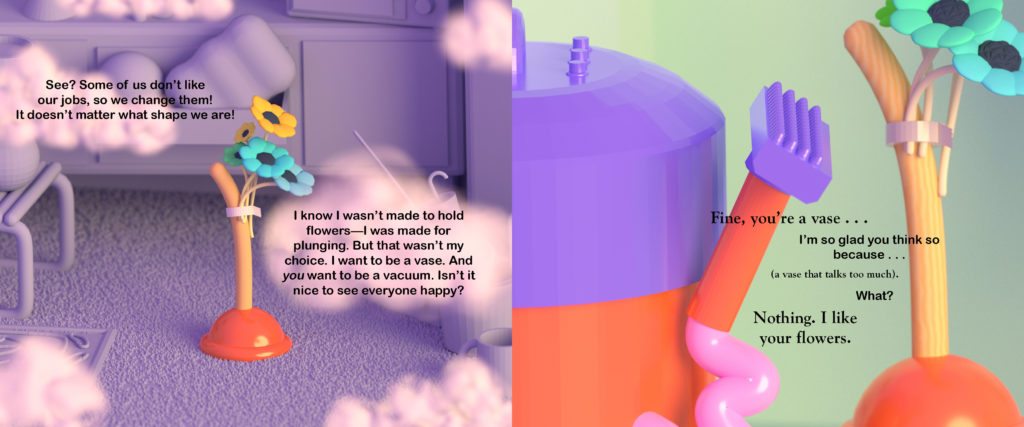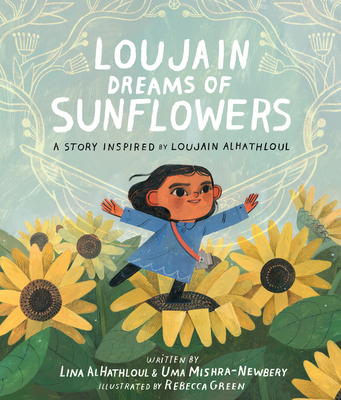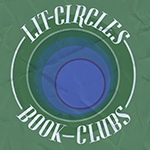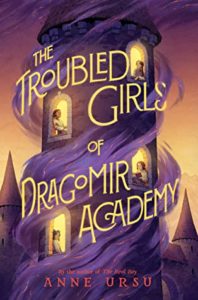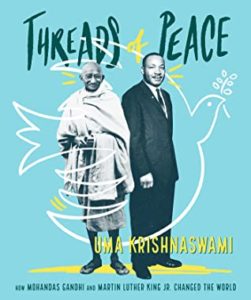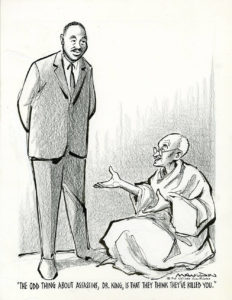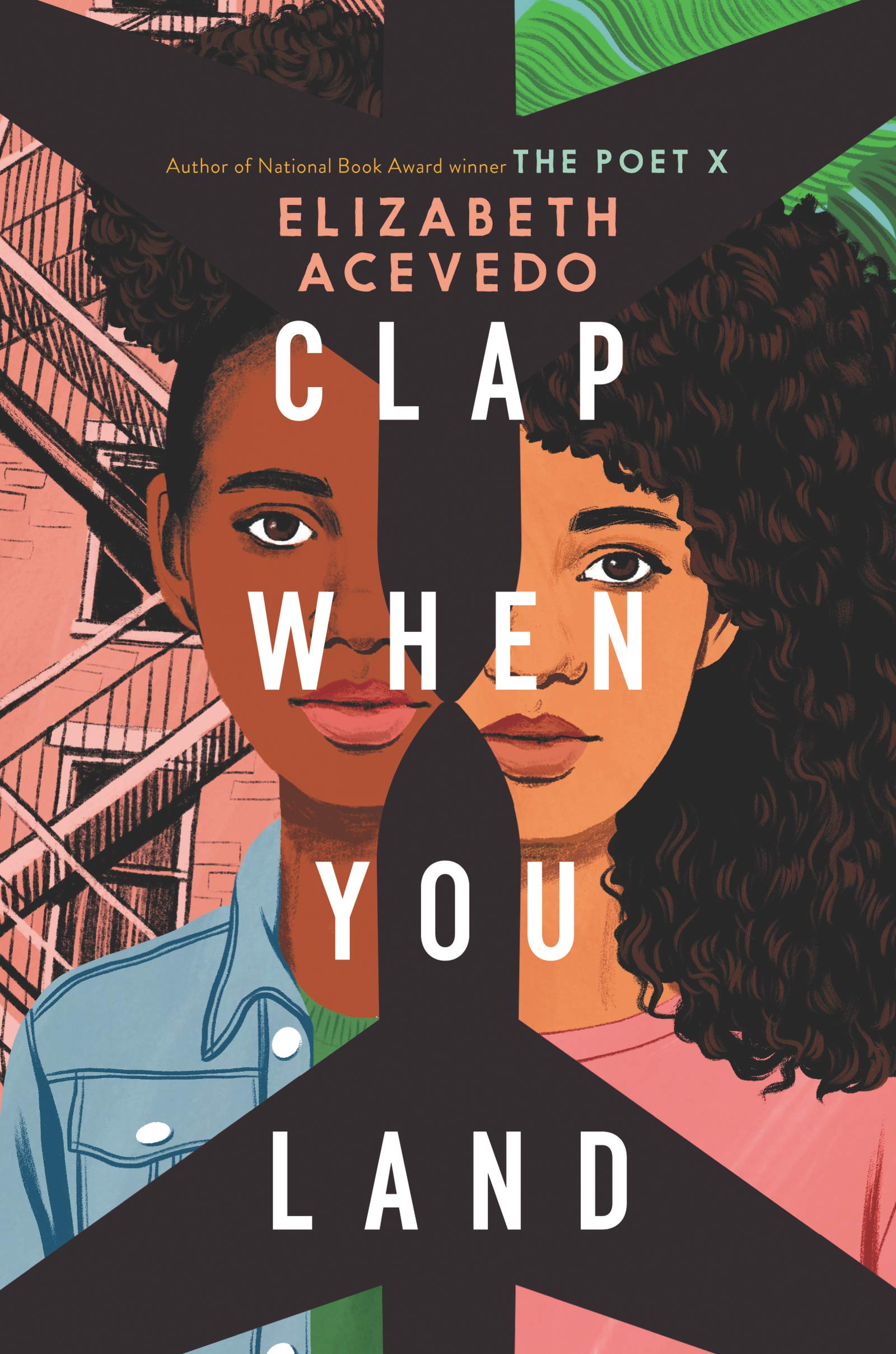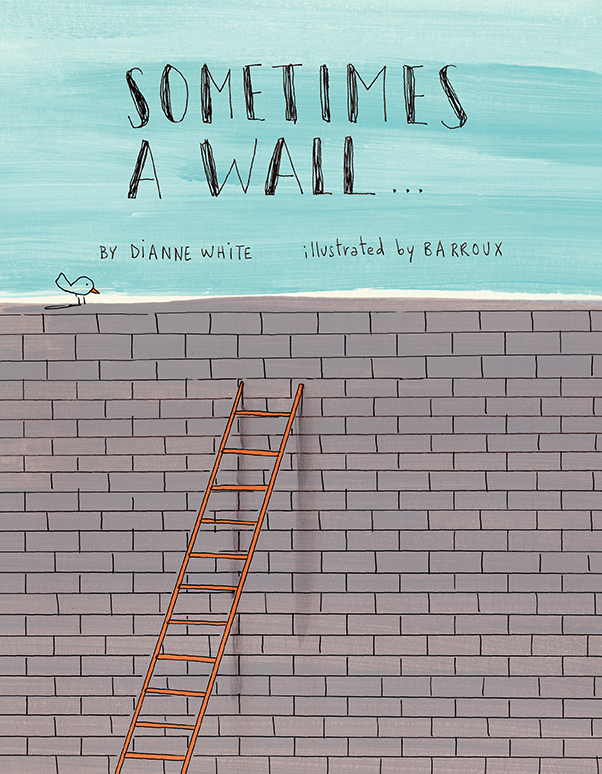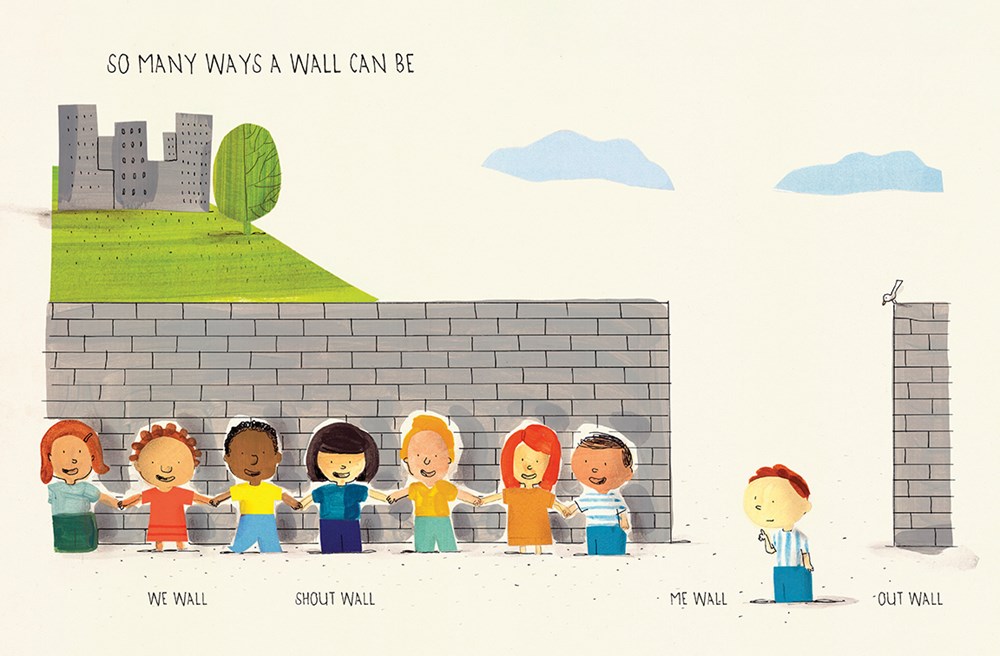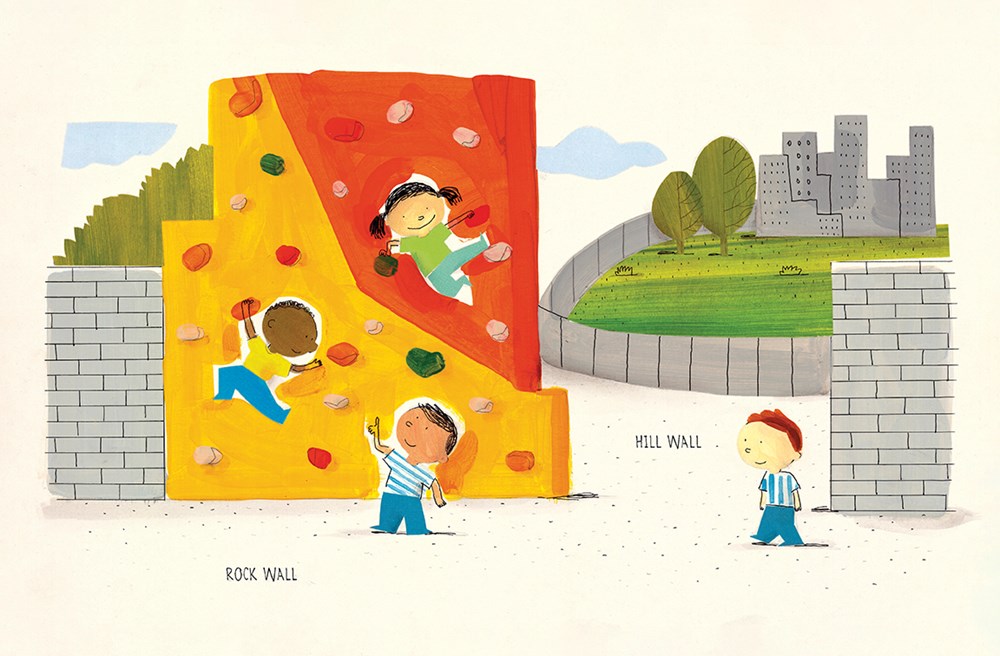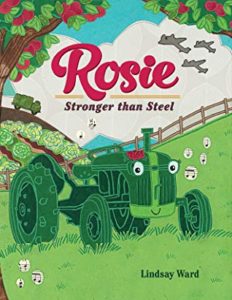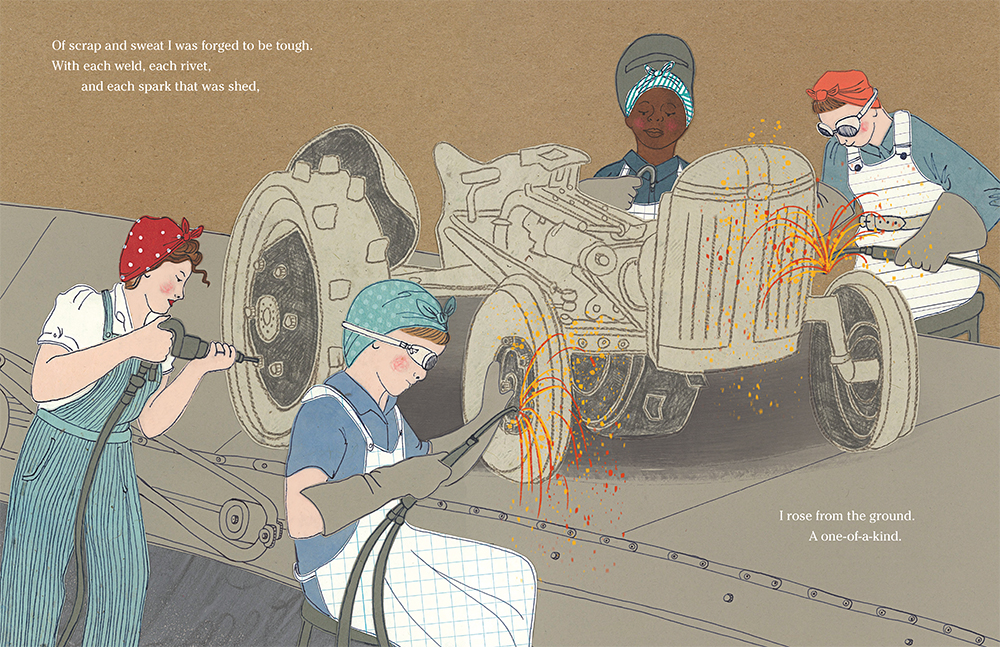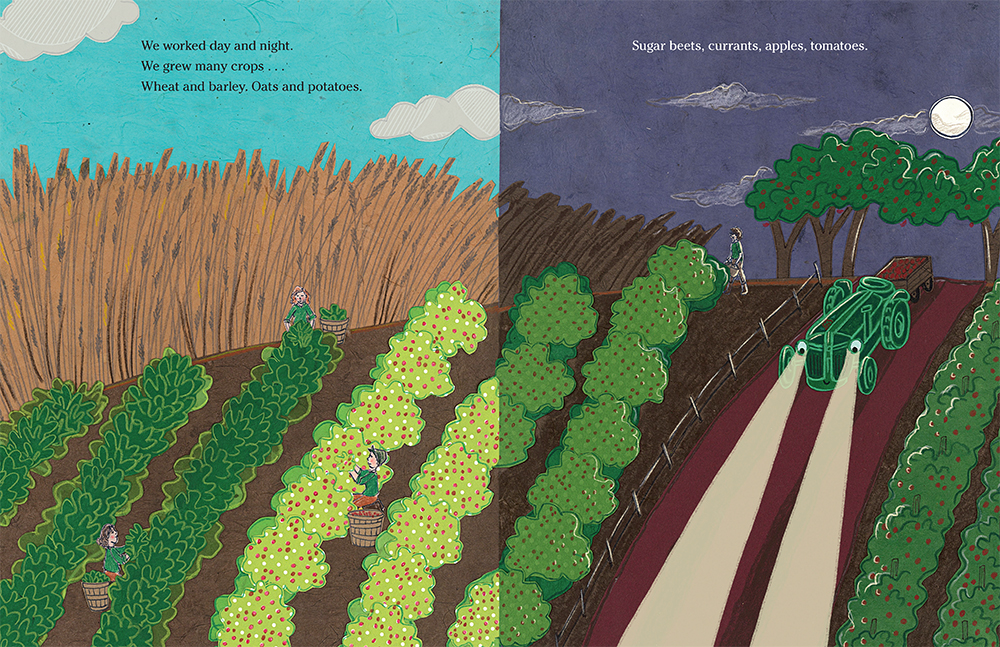I Want to Be a Vase
Author: Julio Torres
Illustrator: Julian Glander
Published June 7, 2022 by Simon & Schuster Children’s Publishing Division
Summary: Former SNL writer and comedic rising star Julio Torres takes readers on a journey through the lives and intimate dramas of some of the unsung shapes of our time in this picture book inspired by his HBO special My Favorite Shapes.
Shapes. You’ve heard of them. You might have even interacted with a few. But do you really know them? From plucky Plunger, who wishes to defy his shape and become a beautiful vase, to other household objects with dreams of a life beyond their predestined roles, I Want to Be a Vase takes readers on an essential and visually stunning journey through the lives and intimate dramas of often-overlooked household appliances.
Press Release: Julio Torres is a comedic genius that pairs a dry, absurd humor with earnestness. I WANT TO BE A VASE is out there, wacky, bonkers, but ultimately grounded in the honesty of sense of self and the dream of defying expectations. The book explores the intricate, complicated emotions of childhood (belonging, jealousy, fear of change, excitement) through humor and metaphor, appealing to a crossover audience while being primarily directed towards a young readership. Kids will see their emotions reflected in plucky Plunger, nervous Vacuum, sassy Sink, and helpful Hair Dryer. It’s perfect for fans of the irreverent playfulness of B.J. Novak’s The Book with No Pictures or Drew Daywalt and Oliver Jeffers’s The Day the Crayons Quit, which take seemingly basic childhood concepts and subvert tropes with wit, insight, and parallels to the human condition.
While this picture book is a hilarious, quirky tale first and foremost, it’s also a story about being your truest self no matter your publicly-ascribed role—in that sense, there’s a gentle pro-trans message to be found here. Julio is a member of the LGBTQ+ community, and many of his works have been heralded as subtly queer and progressive. This book is no exception to that standard!
Julio’s voice is unique and authentic, and, despite the absurdist spark to his work, he connects with his audience on a deeply human level. As a self-proclaimed Aquarius with synesthesia, Julio is also quite the aesthete, and his involvement with the visual component of his book guarantees that it will be like anything you’ve ever seen (while maintaining his dazzlingly fun, bright style which is certain to appeal to young eyes!). 3D artist Julian Glander is the perfect, offbeat other half of this whimsical picture book pairing. A darling of the design world, Julian is a welcome new voice in children’s publishing, though he has experience working in children’s animation. His bright color palette and toylike models perfectly complement Julio’s surreal style.
Julio told The Hollywood Reporter: “Had I followed convention, I would probably have a reasonable job and be married with kids in El Salvador, where I’m from. That sounds nice, except I wanted to be an experimental comedian, prolific writer, and so-so actor in New York. At first, I was on a path to be one sort of person, when I really wanted to be another. I wanted to pursue things I wasn’t supposed to, and had the courage to do it, thanks to my parents never saying, ‘That can’t be,’ but instead asking, ‘Well, why not?’ So this book is about a plunger who wants to be a vase. Because, well, why not?”
Praise:
★“A toilet plunger yearns to be a vase in Torres’s moving object lesson of identity and purpose … A thoughtful and broadly applicable fable with saturated, 3-D-style art by Glander.” –Publishers Weekly, starred review“
The premise is odd but comical and certainly original; children will giggle contemplating different uses for everyday gadgets. Kids are great at pretending and playing imaginative games, so they won’t have trouble buying into the whimsy on offer. They’ll appreciate the reassuring, empowering message to be who you are if that makes you happy, and the collaboration and acceptance themes will resonate. The colorful digital illustrations, featuring dollhouse like miniatures representing common household goods, are very appealing… Hilarious … Great for stimulating creative thinking and art activities: What else can ordinary objects be?” –Kirkus Reviews
About the Creators:
JULIO TORRES (he/him) is a comedian, a former writer on Saturday Night Live, and one of the masterminds behind Los Espookys, HBO’s Spanish-language comedy about a group of horror enthusiasts, produced by Fred Armisen. Julio is also the creator of the HBO special My Favorite Shapes. Released In 2019, this Lorne Michaels-produced special immediately garnered a cult following. In it, Torres conducts an elaborate show-and-tell that offers a backstory to a wide array of “shapes.” With its unusual, absurdist humor and decidedly human narratives explored within the framework of a universal concept, Torres’ performance is the perfect inspiration for a picture book that completely upends expectations about the everyday shapes and objects in our own lives. While I WANT TO BE A VASE is not a direct interpretation of that special, the connection between that piece of work and this story of household objects will be evident to his many fans. Visit him on Instagram @SpacePrinceJulio.
JULIAN GLANDER(he/him) is a 3D animator, designer, and illustrator. Mostly self-taught, he has created work for Disney, Cartoon Network, Nickelodeon, Adult Swim, and The New York Times. He is also the creator of the video game Art Sqooland the squishy comics collection3D Sweeties. Visit him at Glander.co.
Review: There is so much to figuring out who you are, what your identity is, what you enjoy, etc. Plunger is all for trying new things and being a bit different than what is expected of them. However, vacuum cannot handle the lack of order, questioning of ideals, and change. So what will take vacuum to see that it doesn’t matter who everyone is as long as everyone is happy?
I do think Torres was trying to have an extending metaphor about identity specifically, but there is a moment where the characters also mention jobs and liking what they do, so I think that this book will comfort anyone that feels like they don’t fit exactly where everyone expects them to be, either in their identity, how they act, how they dress, what they like to do, etc. And it is pretty silly and fun in so many ways!
And I loved the illustrations by Glander! The 3D art that is clay animantion-esque just brings the characters and setting to life! A perfect combination.
Teachers’ Tools for Navigation and Discussion Questions: Like the Kirkus reviewer mentioned above, I’d love to see what creative thinking this will bring out with students. The discussions and writing that could come from these questions would be fantastic!
- Pick an every day object–what else could it be?
- If you were an every day object, what would you pick?
- Other than what that every day object does, what else could you do if you were that every day object?
- What is something about you that doesn’t fit your “definition”?
- Is there ever a time where you feel like you are a different shape than others expect you to be?
I think conversations about author’s purpose, comparison/contrast, and symbolism could also be started based on this book.
Flagged Passages:
Read This If You Love: My Shadow is Purple by Scott Stuart, I’d Like to be a Window for a Wise Old Dog by Philip C. Stead, Not Quite Narwhal by Jessie Sima, Picture books by The Fan Brothers
Recommended For:
**Thank you to Alex at Simon & Schuster Children’s Publishing Division for providing a copy for review!**







